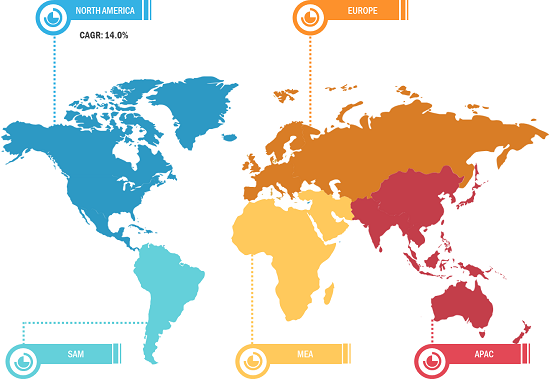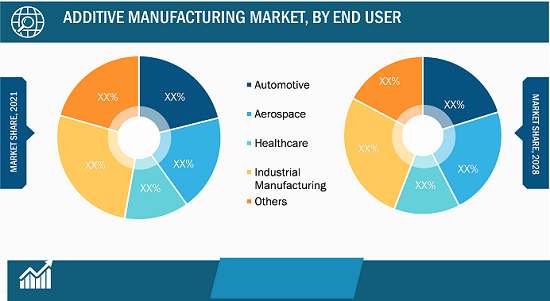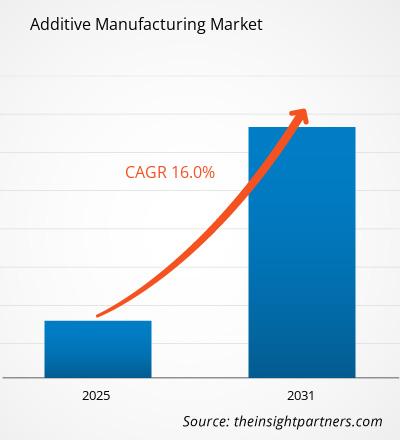Der Markt für additive Fertigung wurde im Jahr 2022 auf 10.383,02 Millionen US-Dollar geschätzt und wird voraussichtlich die USA erreichen 25.171,78 Millionen US-Dollar bis 2031; Von 2022 bis 2031 wird ein durchschnittliches jährliches Wachstum von 16,0 % erwartet.
Der Markt für additive Fertigung hat in der jüngsten Vergangenheit ein erhebliches Wachstum und eine erhebliche Akzeptanz erfahren und wird voraussichtlich auch in Zukunft ein erhebliches Wachstum und eine erhebliche Akzeptanz erfahren. Der Hauptgrund für die zunehmende Einführung der additiven Fertigung ist der zunehmende Bedarf an Automatisierung und kostengünstigen Technologien im Fertigungssektor. Die Implementierung additiver Fertigungstechnologien in der Fertigung erleichtert die Massenproduktion komplex geformter Teile mit kürzeren Vorlaufzeiten. Die additive Fertigung hat aufgrund ihrer hohen Genauigkeit und Produktionsgeschwindigkeit traditionelle Methoden ersetzt. Darüber hinaus verändert die additive Fertigung die Produktion in einer Reihe von Anwendungen.
In Im Jahr 2021 hielt Nordamerika den größten Umsatzanteil am globalen Markt für additive Fertigung. Die hohe Nachfrage aus Fertigungsindustrien wie der Automobil-, Gesundheits- und Konsumgüterbranche treibt vor allem den Markt für additive Fertigung in der Region an. Die additive Fertigung ist für verschiedene Branchen von hoher Relevanz. Die Automobilindustrie ist einer der Hauptanwender der additiven Fertigung. Der wettbewerbsorientierte und dynamische Charakter der Automobilindustrie führt zur Entwicklung neuer Technologien in Nordamerika. Darüber hinaus würde ein zunehmender Einsatz der additiven Fertigung bei OEMs den Bedarf an besseren Lieferketten und Innovationen verstärken. Der Massenmarkt der Branchen, die 3D-Druck nutzen, einschließlich der Automobilindustrie , spielt eine entscheidende Rolle bei der weit verbreiteten Einführung von Technologien, die dazu beitragen, die Preise für Materialien und Maschinen weiter zu senken. Unternehmen in der Region nutzen überwiegend die Technologie der Ablagerungsmodellierung. Die zunehmende Industrialisierung ist der Hauptfaktor für die steigende Nachfrage nach additiver Fertigung in der Region.
Strategische Einblicke
Aufschlüsselung des globalen Marktes für additive Fertigung – nach Region
 Markteinblicke
Markteinblicke
< span style="font-family: verdana, geneva, sans-serif; font-size: 10pt;">Emergence of Factory Automation and Cloud-Based Technologies
Die vernetzte Fabrik ist eine Idee, die sich in den letzten Jahren weiterentwickelt hat. Es bedeutet, die Leistungsfähigkeit des Webs zu erweitern, um Maschinen, Sensoren, Computer und Menschen miteinander zu verbinden und so neue Ebenen der Informationsüberwachung, -sammlung, -verarbeitung und -analyse zu ermöglichen. Diese Geräte bieten mehr Präzision und können gesammelte Daten in Erkenntnisse umwandeln. Sie können beispielsweise dabei helfen, die zur Herstellung eines Produkts verwendete Spannung zu bestimmen oder besser zu verstehen, wie sich Temperatur, Druck und Luftfeuchtigkeit auf die Leistung auswirken. Fortschritte in der Cloud-Technologie haben es Unternehmen auf der ganzen Welt ermöglicht, schnell auf wichtige Informationen zuzugreifen, und eine einfache Verfügbarkeit von Tools und Daten für Menschen geschaffen, unabhängig von Ort und Zeit. Darüber hinaus wird erwartet, dass die Industrie 4.0-Initiative eine langfristige Vision und Zukunft für die Fertigungsumgebung bietet. Diese Faktoren sind dafür verantwortlich, den Markt für additive Fertigung voranzutreiben.
Einblicke in den Endbenutzer
Basierend auf dem Endbenutzer, global Der Markt für additive Fertigung wurde in Automobil, Luft- und Raumfahrt, Gesundheitswesen, industrielle Fertigung und andere unterteilt. Das Segment der industriellen Fertigung hielt im Jahr 2021 den größten Marktanteil im globalen Markt für additive Fertigung. Die globale Fertigungsindustrie wächst rasant, da aufstrebende Regionen zunehmend in die Einführung von Fertigungsanlagen investieren. Die Expansion in der verarbeitenden Industrie wird weiterhin stark vom weltweiten Wirtschaftswachstum getragen. Diese technologische Revolution in den Fabriken hat die Fertigungsindustrie dazu ermutigt, weiter in neue Technologien zu investieren, um ihre Produktivität und ihren Produktionszyklus zu verbessern. Daher wird erwartet, dass die schnelle Expansion in der Fertigungsindustrie die Nachfrage nach Prototyping und dem Einsatz von 3D-Technologien weltweit ankurbeln wird.
Markt für additive Fertigung, nach Endbenutzer – 2021 und 2031
 < /strong>3D Systems; Stratasys, Inc.; Arcam AB; EOS GmbH; 3T RPD, LTD.; Envisiontec GmbH; GPI Prototypen- und Fertigungsdienstleistungen; 3D-Hubs; Sciaky, Inc.; und ProtoCAM gehören zu den Hauptakteuren auf dem globalen Markt für additive Fertigung. Akteure, die auf dem globalen Markt für additive Fertigung tätig sind, konzentrieren sich ständig auf Strategien wie Investitionen in Forschungs- und Entwicklungsaktivitäten und die Einführung neuer Produkte.
< /strong>3D Systems; Stratasys, Inc.; Arcam AB; EOS GmbH; 3T RPD, LTD.; Envisiontec GmbH; GPI Prototypen- und Fertigungsdienstleistungen; 3D-Hubs; Sciaky, Inc.; und ProtoCAM gehören zu den Hauptakteuren auf dem globalen Markt für additive Fertigung. Akteure, die auf dem globalen Markt für additive Fertigung tätig sind, konzentrieren sich ständig auf Strategien wie Investitionen in Forschungs- und Entwicklungsaktivitäten und die Einführung neuer Produkte.
Report Spotlights
- Fortschrittliche Branchentrends im Markt für additive Fertigung, um den Akteuren bei der Entwicklung effektiver langfristiger Strategien zu helfen< /span>
- Geschäftswachstumsstrategien, die von entwickelten und sich entwickelnden Märkten übernommen werden
- Quantitative Analyse des Marktes für additive Fertigung von 2021 bis 2031
- Schätzung der weltweiten Nachfrage nach additiver Fertigung
- Porters Fünf-Kräfte-Analyse zur Veranschaulichung der Wirksamkeit von Käufern und Lieferanten, die in der Branche tätig sind
- Neueste Entwicklungen zum Verständnis des Wettbewerbsmarktszenarios
- Markttrend und -aussichten sowie Faktoren, die das Wachstum des Marktes für additive Fertigung antreiben und hemmen
- Unterstützung im Entscheidungsprozess durch Hervorhebung von Marktstrategien, die kommerzielle Interessen untermauern und zum Marktwachstum führen
- Die Größe des Marktes für additive Fertigung an verschiedenen Knoten
- Detaillierter Überblick und Segmentierung des Marktes sowie der Dynamik der additiven Fertigungsindustrie
- Größe des Marktes für additive Fertigung in verschiedenen Regionen mit vielversprechenden Wachstumschancen
Der globale Markt für additive Fertigung ist nach Material, Technologie, Endbenutzer und Geografie segmentiert. Basierend auf dem Material ist der globale Markt für additive Fertigung in Kunststoff, Metall, Keramik und andere unterteilt. In Bezug auf Aufgrund der technologischen Entwicklung ist der globale Markt für additive Fertigung in selektives Lasersintern (SLS), Stereolithographie (SLA), Fused Deposition Modeling (FDM) und andere unterteilt. Basierend auf dem Endbenutzer ist der globale Markt für additive Fertigung in Automobil und Luft- und Raumfahrt unterteilt , Gesundheitswesen und industrielle Fertigung.
Firmenprofile
- 3D Systems
- Stratasys, Inc.
- Arcam AB
- EOS GmbH
- 3T RPD, LTD.
- Envisiontec Gmbh
- GPI Prototype and Manufacturing Services
- 3D Hubs
- Sciaky, Inc.
- ProtoCAM
- Historische Analyse (2 Jahre), Basisjahr, Prognose (7 Jahre) mit CAGR
- PEST- und SWOT-Analyse
- Marktgröße Wert/Volumen – Global, Regional, Land
- Branche und Wettbewerbsumfeld
- Excel-Datensatz



Report Coverage
Revenue forecast, Company Analysis, Industry landscape, Growth factors, and Trends

Segment Covered
This text is related
to segments covered.

Regional Scope
North America, Europe, Asia Pacific, Middle East & Africa, South & Central America

Country Scope
This text is related
to country scope.
Trends and growth analysis reports related to Chemicals and Materials : READ MORE..
The List of Companies - Additive Manufacturing Market
- 3D Systems, Inc.
- Stratasys Ltd.
- 3T RPD, LTD.
- Arcam AB
- EOS GmbH
- 3D Hubs B.V.
- ENVISIONTEC, INC.
- ProtoCAM
- Sciaky, Inc.
- GPI Prototype and Manufacturing Services
The Insight Partners performs research in 4 major stages: Data Collection & Secondary Research, Primary Research, Data Analysis and Data Triangulation & Final Review.
- Data Collection and Secondary Research:
As a market research and consulting firm operating from a decade, we have published and advised several client across the globe. First step for any study will start with an assessment of currently available data and insights from existing reports. Further, historical and current market information is collected from Investor Presentations, Annual Reports, SEC Filings, etc., and other information related to company’s performance and market positioning are gathered from Paid Databases (Factiva, Hoovers, and Reuters) and various other publications available in public domain.
Several associations trade associates, technical forums, institutes, societies and organization are accessed to gain technical as well as market related insights through their publications such as research papers, blogs and press releases related to the studies are referred to get cues about the market. Further, white papers, journals, magazines, and other news articles published in last 3 years are scrutinized and analyzed to understand the current market trends.
- Primary Research:
The primarily interview analysis comprise of data obtained from industry participants interview and answers to survey questions gathered by in-house primary team.
For primary research, interviews are conducted with industry experts/CEOs/Marketing Managers/VPs/Subject Matter Experts from both demand and supply side to get a 360-degree view of the market. The primary team conducts several interviews based on the complexity of the markets to understand the various market trends and dynamics which makes research more credible and precise.
A typical research interview fulfils the following functions:
- Provides first-hand information on the market size, market trends, growth trends, competitive landscape, and outlook
- Validates and strengthens in-house secondary research findings
- Develops the analysis team’s expertise and market understanding
Primary research involves email interactions and telephone interviews for each market, category, segment, and sub-segment across geographies. The participants who typically take part in such a process include, but are not limited to:
- Industry participants: VPs, business development managers, market intelligence managers and national sales managers
- Outside experts: Valuation experts, research analysts and key opinion leaders specializing in the electronics and semiconductor industry.
Below is the breakup of our primary respondents by company, designation, and region:

Once we receive the confirmation from primary research sources or primary respondents, we finalize the base year market estimation and forecast the data as per the macroeconomic and microeconomic factors assessed during data collection.
- Data Analysis:
Once data is validated through both secondary as well as primary respondents, we finalize the market estimations by hypothesis formulation and factor analysis at regional and country level.
- Macro-Economic Factor Analysis:
We analyse macroeconomic indicators such the gross domestic product (GDP), increase in the demand for goods and services across industries, technological advancement, regional economic growth, governmental policies, the influence of COVID-19, PEST analysis, and other aspects. This analysis aids in setting benchmarks for various nations/regions and approximating market splits. Additionally, the general trend of the aforementioned components aid in determining the market's development possibilities.
- Country Level Data:
Various factors that are especially aligned to the country are taken into account to determine the market size for a certain area and country, including the presence of vendors, such as headquarters and offices, the country's GDP, demand patterns, and industry growth. To comprehend the market dynamics for the nation, a number of growth variables, inhibitors, application areas, and current market trends are researched. The aforementioned elements aid in determining the country's overall market's growth potential.
- Company Profile:
The “Table of Contents” is formulated by listing and analyzing more than 25 - 30 companies operating in the market ecosystem across geographies. However, we profile only 10 companies as a standard practice in our syndicate reports. These 10 companies comprise leading, emerging, and regional players. Nonetheless, our analysis is not restricted to the 10 listed companies, we also analyze other companies present in the market to develop a holistic view and understand the prevailing trends. The “Company Profiles” section in the report covers key facts, business description, products & services, financial information, SWOT analysis, and key developments. The financial information presented is extracted from the annual reports and official documents of the publicly listed companies. Upon collecting the information for the sections of respective companies, we verify them via various primary sources and then compile the data in respective company profiles. The company level information helps us in deriving the base number as well as in forecasting the market size.
- Developing Base Number:
Aggregation of sales statistics (2020-2022) and macro-economic factor, and other secondary and primary research insights are utilized to arrive at base number and related market shares for 2022. The data gaps are identified in this step and relevant market data is analyzed, collected from paid primary interviews or databases. On finalizing the base year market size, forecasts are developed on the basis of macro-economic, industry and market growth factors and company level analysis.
- Data Triangulation and Final Review:
The market findings and base year market size calculations are validated from supply as well as demand side. Demand side validations are based on macro-economic factor analysis and benchmarks for respective regions and countries. In case of supply side validations, revenues of major companies are estimated (in case not available) based on industry benchmark, approximate number of employees, product portfolio, and primary interviews revenues are gathered. Further revenue from target product/service segment is assessed to avoid overshooting of market statistics. In case of heavy deviations between supply and demand side values, all thes steps are repeated to achieve synchronization.
We follow an iterative model, wherein we share our research findings with Subject Matter Experts (SME’s) and Key Opinion Leaders (KOLs) until consensus view of the market is not formulated – this model negates any drastic deviation in the opinions of experts. Only validated and universally acceptable research findings are quoted in our reports.
We have important check points that we use to validate our research findings – which we call – data triangulation, where we validate the information, we generate from secondary sources with primary interviews and then we re-validate with our internal data bases and Subject matter experts. This comprehensive model enables us to deliver high quality, reliable data in shortest possible time.

 Holen Sie sich ein kostenloses Muster für diesen Bericht
Holen Sie sich ein kostenloses Muster für diesen Bericht